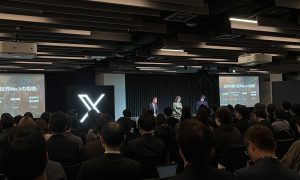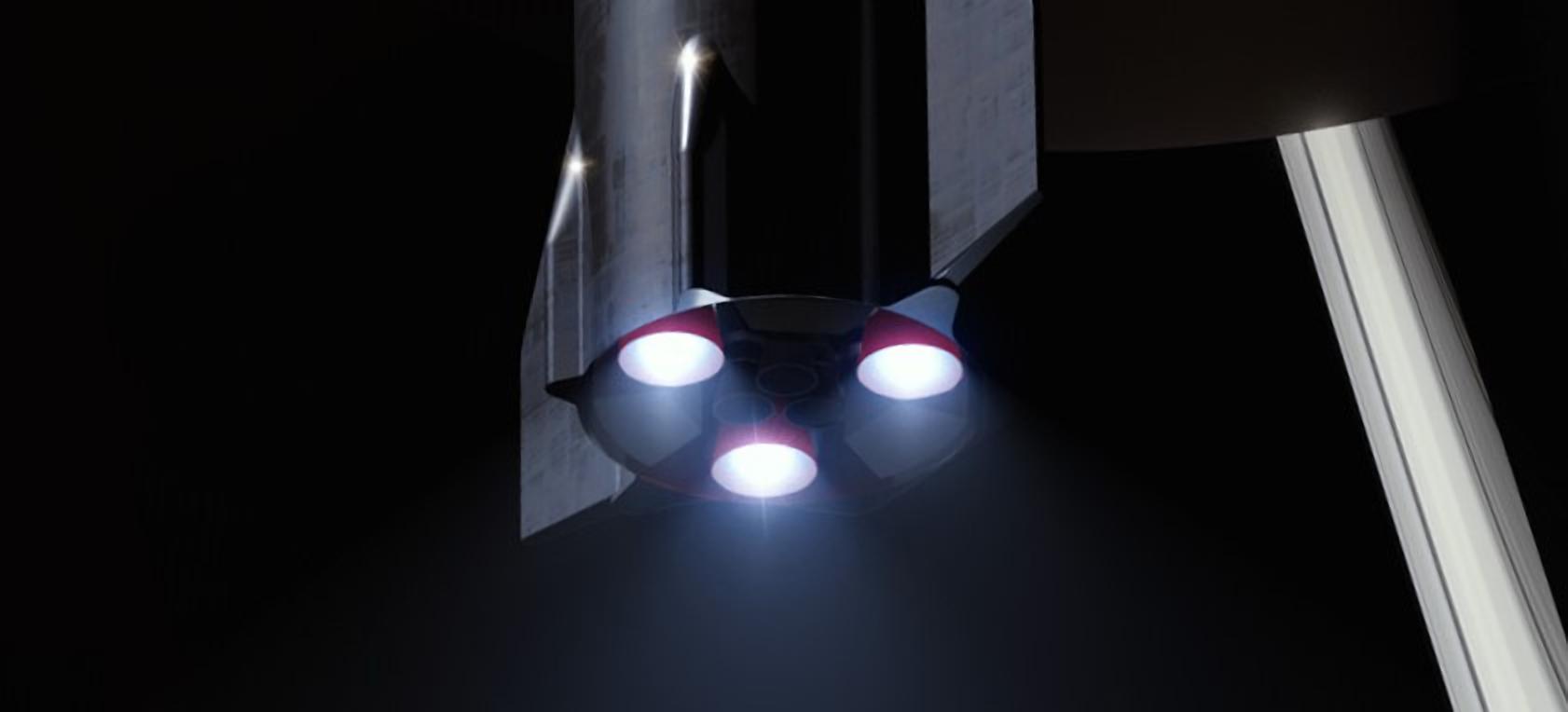

News
SpaceX’s first orbital Starship rocket engine is almost ready for testing
CEO Elon Musk says that SpaceX is “about a month away” from testing a rocket engine that will be essential for Starship and its Super Heavy booster to reach their full potential.
Known as Raptor Vacuum, the engine – as its name suggests – is a variant of the base Raptor engine optimized for maximum performance and efficiency in the vacuum of space. Although Starship could technically still function and likely reach orbit with only sea level-optimized Raptors installed, it would likely significantly limit the amount of payload it could carry into Earth orbit and would especially harm the ship’s performance to higher orbits and other planets.
Back in May 2019, Musk revealed that SpaceX had shifted gears again, forgoing a plan to begin orbital Starship flight operations with only sea level Raptors, gradually designing and phasing in RaptorVac engines much further down the road. Instead, SpaceX restarted (relatively) urgent work on the vacuum variant and Musk hinted that it would “aspirationally” be ready to support launches in the near term. A few weeks shy of a year later, Musk says that Raptor Vacuum testing could begin as early as June 2020.
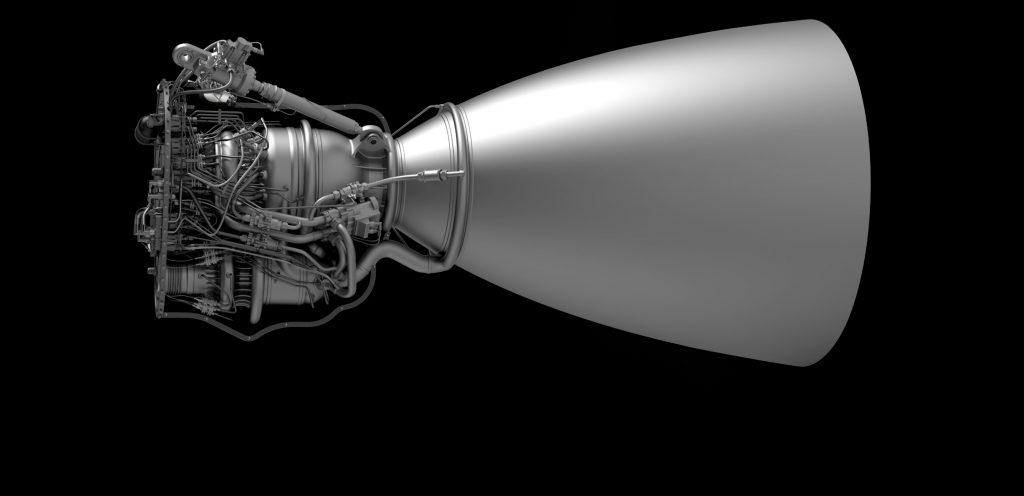
For a variety of reasons, even if based directly off of an existing design, vacuum-optimized engines are typically much more complex than a comparable sea level variant. While efficiency is always relatively important for rocket engine design, it becomes even more paramount when dealing with vacuum rocketry, as the entire point of a dedicated vacuum-optimized engine is to eke as much efficiency as possible out of a launch vehicle’s orbital stage(s).
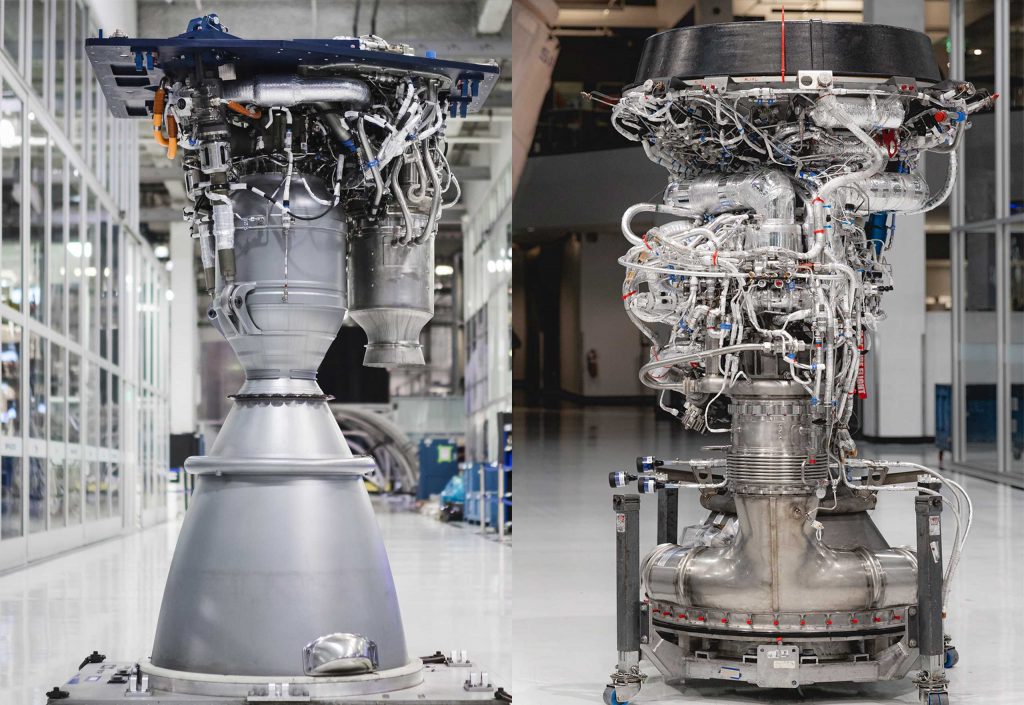
For example, even from a purely visual perspective, Merlin Vacuum (MVac) is substantially different when compared to the Merlin 1D engine it’s based on. Due to a number of major and largely unknown differences, the engines’ shared components are largely invisible. It’s unclear how similar they are but it’s safe to say that they share at least ~50% commonality. Obviously, the most apparent part of the difference between a vacuum-optimized engine and an atmosphere-optimized engine is the bell nozzle: MVac has a nozzle that is dramatically larger than M1D.
Raptor will be no different, with the sea-level variant featuring a nozzle about 1m (3.2 ft) in diameter, whereas RaptorVac’s bell will have a diameter closer to 2.5m (~8 ft). With SpaceX’s apparent May 2019 pivot back to working on RaptorVac now, the company has been working on a dedicated vacuum variant of the high-performance methane-oxygen engine for at least a full year. Now, perhaps beginning as early as June or July, Musk suggests that the first RaptorVac engine (SN0? SN1?) is almost ready to commence static fire testing.
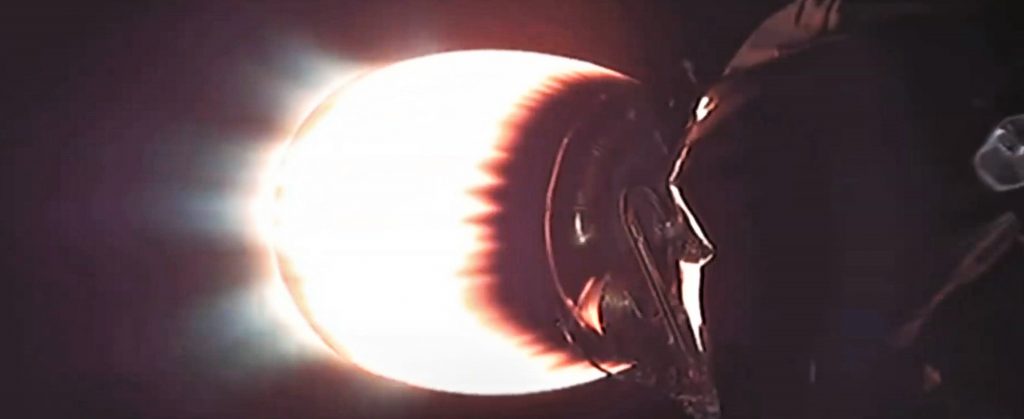
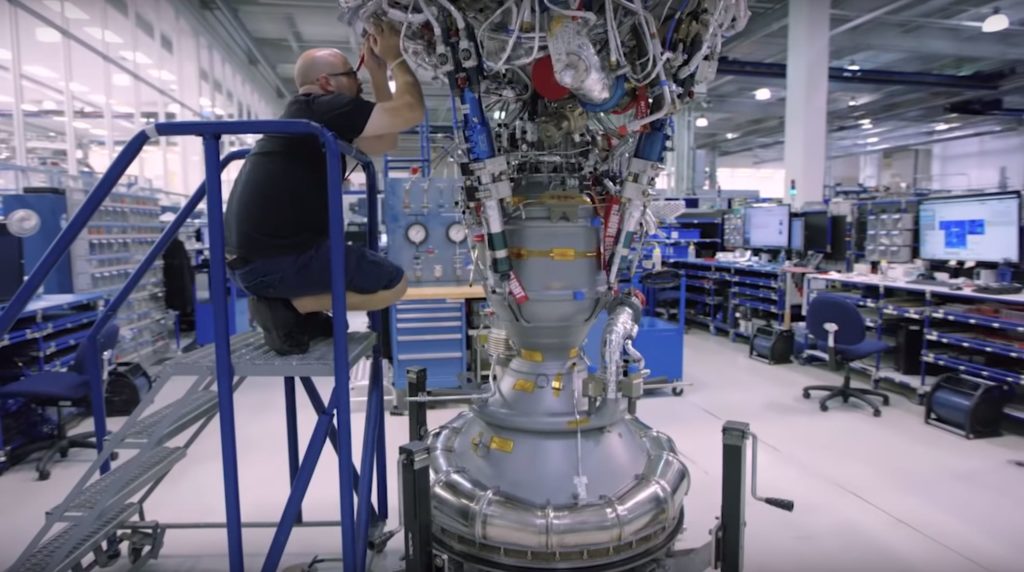
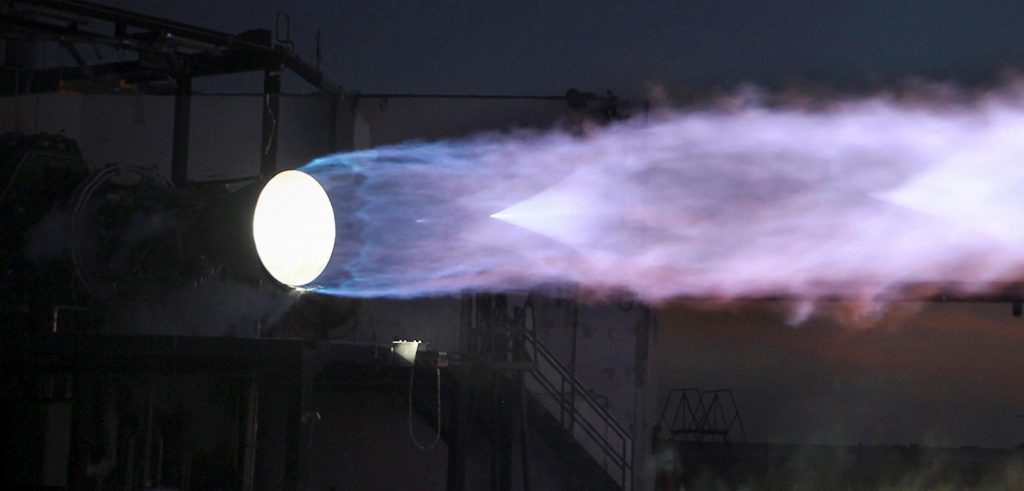
The nature of that testing is a bit of a mystery. While it will almost certainly occur at SpaceX’s McGregor, Texas test and development facilities, it’s unclear if Raptor Vacuum’s first static fire test campaign will be attempted with the engine’s extended nozzle installed. Back in October 2019, Musk suggested that yes, Raptor Vacuum version 1.0 would have a nozzle small enough to operate at sea level without destroying itself or its test facilities. With Merlin Vacuum engines, SpaceX performs acceptance tests in Texas but only without their nozzle extensions installed. If Musk’s October 2019 comments remain true, that may not be the case for RaptorVac.
Either way, it will be thoroughly interesting to note the differences between RaptorVac and its sea level-optimized predecessor if or when Elon Musk or SpaceX releases photos of their newest engine as it nears its first major tests. Simultaneously, SpaceX is also readying a sea-level Raptor for its inaugural static fire test while attached to a full-scale Starship prototype, while the first test with three Raptor engines installed could be attempted just a few weeks from now.
News
Tesla begins Robotaxi certification push in Arizona: report
Tesla seems serious about expanding its Robotaxi service to several states in the coming months.

Tesla has initiated discussions with Arizona transportation regulators to certify its driverless Robotaxi service in the state, as per a recent report from Bloomberg News. The move follows Tesla’s launch of its Robotaxi pilot program in Austin, Texas, as well as CEO Elon Musk’s recent comments about the service’s expansion in the Bay Area.
The Arizona Department of Transportation confirmed to Bloomberg that Tesla has reached out to begin the certification process for autonomous ride-sharing operations in the state. While details remain limited, the outreach suggests that Tesla is serious about expanding its driverless Robotaxi service to several territories in the coming months.
The Arizona development comes as Tesla prepares to expand its service area in Austin this weekend, as per CEO Elon Musk in a post on X. Musk also stated that Tesla is targeting the San Francisco Bay Area as its next major market, with a potential launch “in a month or two,” pending regulatory approvals.
Tesla first launched its autonomous ride-hailing program on June 22 in Austin with a small fleet of Model Y vehicles, accompanied by a Tesla employee in the passenger seat to monitor safety. While still classified as a test, Musk has said the program will expand to about 1,000 vehicles in the coming months. Tesla will later upgrade its Robotaxi fleet with the Cyercab, a two-seater that is designed without a steering wheel.
Sightings of Cybercab castings around the Giga Texas complex suggests that Tesla may be ramping the initial trial production of the self-driving two-seater. Tesla, for its part, has noted in the past that volume production of the Cybercab is expected to start sometime next year.
In California, Tesla has already applied for a transportation charter-party carrier permit from the state’s Public Utilities Commission. The company is reportedly taking a phased approach to operating in California, with the Robotaxi service starting with pre-arranged rides for employees in vehicles with safety drivers.
News
Tesla sets November 6 date for 2025 Annual Shareholder Meeting
The automaker announced the date on Thursday in a Form 8-K.

Tesla has scheduled its 2025 annual shareholder meeting for November 6, addressing investor concerns that the company was nearing a legal deadline to hold the event.
The automaker announced the date on Thursday in a Form 8-K submitted to the United States Securities and Exchange Commission (SEC). The company also listed a new proposal submission deadline of July 31 for items to be included in the proxy statement.
Tesla’s announcement followed calls from a group of 27 shareholders, including the leaders of large public pension funds, which urged Tesla’s board to formally set the meeting date, as noted in a report from The Wall Street Journal.
The group noted that under Texas law, where Tesla is now incorporated, companies must hold annual meetings within 13 months of the last one if requested by shareholders. Tesla’s previous annual shareholder meeting was held on June 13, 2024, which placed the July 13 deadline in focus.
Tesla originally stated in its 2024 annual report that it would file its proxy statement by the end of April. However, an amended filing on April 30 indicated that the Board of Directors had not yet finalized a meeting date, at least at the time.
The April filing also confirmed that Tesla’s board had formed a special committee to evaluate certain matters related to CEO Elon Musk’s compensation plan. Musk’s CEO performance award remains at the center of a lengthy legal dispute in Delaware, Tesla’s former state of incorporation.
Due to the aftermath of Musk’s legal dispute about his compensation plan in Delaware, he has not been paid for his work at Tesla for several years. Musk, for his part, has noted that he is more concerned about his voting stake in Tesla than his actual salary.
At last year’s annual meeting, TSLA shareholders voted to reapprove Elon Musk’s compensation plan and ratified Tesla’s decision to relocate its legal domicile from Delaware to Texas.
Elon Musk
Grok coming to Tesla vehicles next week “at the latest:” Elon Musk
Grok’s rollout to Tesla vehicles is expected to begin next week at the latest.

Elon Musk announced on Thursday that Grok, the large language model developed by his startup xAI, will soon be available in Tesla vehicles. Grok’s rollout to Tesla vehicles is expected to begin next week at the latest, further deepening the ties between the two Elon Musk-led companies.
Tesla–xAI synergy
Musk confirmed the news on X shortly after livestreaming the release of Grok 4, xAI’s latest large language model. “Grok is coming to Tesla vehicles very soon. Next week at the latest,” Musk wrote in a post on social media platform X.
During the livestream, Musk and several members of the xAI team highlighted several upgrades to Grok 4’s voice capabilities and performance metrics, positioning the LLM as competitive with top-tier models from OpenAI and Google.
The in-vehicle integration of Grok marks a new chapter in Tesla’s AI development. While Tesla has long relied on in-house systems for autonomous driving and energy optimization, Grok’s integration would introduce conversational AI directly into its vehicles’ user experience. This integration could potentially improve customer interaction inside Tesla vehicles.
xAI and Tesla’s collaborative footprint
Grok’s upcoming rollout to Tesla vehicles adds to a growing business relationship between Tesla and xAI. Earlier this year, Tesla disclosed that it generated $198.3 million in revenue from commercial, consulting, and support agreements with xAI, as noted in a report from Bloomberg News. A large portion of that amount, however, came from the sale of Megapack energy storage systems to the artificial intelligence startup.
In July 2023, Musk polled X users about whether Tesla should invest $5 billion in xAI. While no formal investment has been made so far, 68% of poll participants voted yes, and Musk has since stated that the idea would be discussed with Tesla’s board.
-

 Elon Musk1 week ago
Elon Musk1 week agoTesla investors will be shocked by Jim Cramer’s latest assessment
-

 Elon Musk3 days ago
Elon Musk3 days agoElon Musk confirms Grok 4 launch on July 9 with livestream event
-

 Elon Musk11 hours ago
Elon Musk11 hours agoxAI launches Grok 4 with new $300/month SuperGrok Heavy subscription
-

 News6 days ago
News6 days agoTesla Model 3 ranks as the safest new car in Europe for 2025, per Euro NCAP tests
-

 Elon Musk2 weeks ago
Elon Musk2 weeks agoA Tesla just delivered itself to a customer autonomously, Elon Musk confirms
-

 Elon Musk1 week ago
Elon Musk1 week agoxAI’s Memphis data center receives air permit despite community criticism
-

 Elon Musk2 weeks ago
Elon Musk2 weeks agoTesla’s Omead Afshar, known as Elon Musk’s right-hand man, leaves company: reports
-

 News2 weeks ago
News2 weeks agoXiaomi CEO congratulates Tesla on first FSD delivery: “We have to continue learning!”


